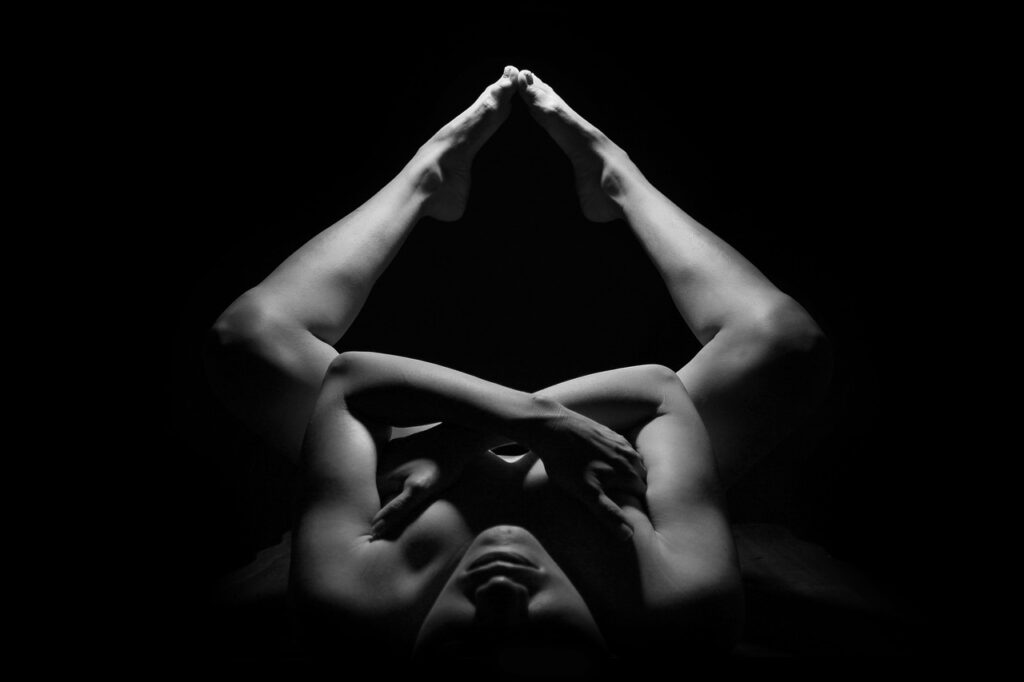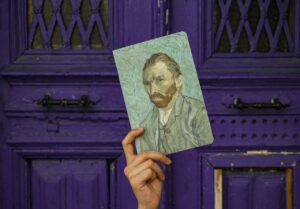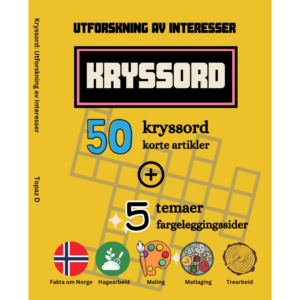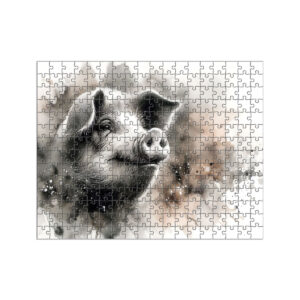
Explore & Play
Discover interesting topics and solve the accompanying crossword puzzle.
Body part crossword | Structure and Functions of the Human Body
Table of Contents
At the beginning of this blog post, we invite you to start by playing the Body part crossword to challenge your knowledge of the human body. If you’re not very familiar with the topic, feel free to read through the article first and then return to the crossword for a fun way to reinforce what you’ve learned.
Body Part Crossword
You can either fill in the crossword puzzle directly on this page or click the button in the bottom right corner to print it for free.

The Human Body: A Comprehensive Guide to Its Structure and Functions
The human body is a marvel of complexity and precision, with each part working together to ensure survival and function. From the head down to the toes, every body part has a specific role, contributing to the overall health of the body. This article will provide a comprehensive guide to the structure and functions of the human body, exploring its various parts and their importance in maintaining our well-being. Along the way, we’ll also introduce a crossword puzzle to help you learn more about the parts and functions of the body in a fun and interactive way.
1. The Head: The Control Center
At the top of our body lies the head, which houses our brain and sensory organs that allow us to interact with the world. The head is essential not only for our physical functions but also for cognition, communication, and perception. Let’s take a closer look at the different parts of the head and how they contribute to our overall functioning.
1.1 The Brain: The Body’s Command Center
The brain is the central organ that controls almost all bodily functions. It processes information, makes decisions, and sends commands to other parts of the body. From controlling voluntary movements to regulating vital processes like breathing and digestion, the brain serves as the body’s command center. The spinal cord, which extends from the brain, connects to various nerves throughout the body, ensuring that signals are transmitted efficiently.
1.2 Eyes: The Windows to the World
Our eyes allow us to see and perceive the world around us. Through a complex system involving the cornea, retina, and optic nerve, light enters the eyes and is processed by the brain. This allows us to interpret shapes, colors, and movement, which are crucial for navigation, communication, and survival. The ability to see is fundamental to almost every aspect of daily life, and the eyes provide us with a wealth of sensory information.
1.3 Ears: Hearing and Balance
The ears are not only responsible for hearing but also for helping us maintain balance. Sound waves enter the ear and are converted into electrical signals that the brain interprets as sound. At the same time, the inner ear plays a critical role in maintaining balance through the vestibular system, which detects changes in head position. This dual function of hearing and balance is essential for many activities, including communication, movement, and spatial orientation.
1.4 Nose: The Sense of Smell
The nose is integral to both breathing and smelling. As we inhale, the nose filters and humidifies the air, ensuring that the lungs receive clean and moist air. Additionally, the olfactory receptors in the nasal cavity detect scents, sending signals to the brain that allow us to experience and respond to different smells. Our sense of smell is closely linked to taste, and together, they play a major role in food enjoyment and safety.
1.5 Mouth: Eating, Speaking, and Breathing
The mouth serves multiple functions. It is the entry point for food and liquids, initiating the digestive process. The teeth break down food, while the saliva helps with swallowing and digestion. The mouth is also critical for speech, as it shapes sounds produced by the vocal cords into words. Additionally, the mouth assists in breathing, especially when nasal passages are blocked or when exerting physical effort.
2. The Neck and Shoulders: Supporting the Head and Upper Body
The neck and shoulders provide support for the head and allow movement, while also serving as the gateway for blood vessels and nerves. The neck is flexible yet strong, enabling the head to rotate and tilt while protecting vital structures like the windpipe and blood vessels.
2.1 Neck: The Connector
The neck connects the head to the torso, acting as a conduit for nerves and blood vessels that travel to and from the brain. The cervical spine, made up of vertebrae, provides support and flexibility, allowing the head to move in various directions. The neck also houses the esophagus, which carries food and liquids from the mouth to the stomach.
2.2 Shoulders: Mobility and Strength
The shoulders are crucial for the movement of the upper limbs, allowing us to lift, reach, and rotate our arms. The shoulder joint, known as the glenohumeral joint, is one of the most mobile joints in the body, enabling a wide range of arm movements. Muscles in the shoulders, such as the deltoid, provide the strength necessary for lifting and carrying.
3. The Arms and Hands: Tools for Interaction
Our arms and hands are designed for dexterity, allowing us to perform everything from simple tasks to complex activities. The coordination between the bones, joints, muscles, and tendons in the arms and hands makes them one of the most versatile parts of the body.
3.1 Arms: Reaching and Lifting
The arms are vital for a variety of tasks, including lifting, reaching, and carrying objects. The humerus, the long bone in the upper arm, connects to the shoulder and allows movement. The forearm consists of two bones, the radius and ulna, which work together to enable rotation and flexibility. The elbow joint serves as the hinge, facilitating bending and straightening motions.
3.2 Elbows and Wrists: Joints That Enable Movement
The elbows and wrists are essential for the fluid motion of the arms and hands. The elbow joint acts as a lever, enabling the arm to bend and extend. Meanwhile, the wrist, made up of a complex system of small bones and ligaments, allows for the fine-tuned movements necessary for tasks like typing, writing, and gripping.
3.3 Hands and Fingers: Tools of Dexterity
The hands and fingers are key to interacting with the world around us. The thumb’s opposability, which allows it to touch all other fingers, is critical for grasping objects. The fingers themselves are highly sensitive and skilled, enabling intricate tasks like holding a pen, typing on a keyboard, or tying shoelaces. The coordination of the hand muscles, bones, and nerves makes the hands incredibly versatile tools for manipulation.
4. The Torso: The Core of Life-Sustaining Organs
The torso is home to several vital organs that are crucial for survival, including the heart, lungs, and digestive system. It is the central part of the body, providing structure and housing essential systems that keep us alive.
4.1 Chest and Ribs: Protecting Vital Organs
The chest, protected by the ribs, houses several critical organs, including the heart and lungs. The ribcage forms a protective barrier that shields these organs from injury while allowing for expansion and contraction during breathing. The intercostal muscles between the ribs aid in the expansion of the lungs during respiration.
4.2 The Heart: The Life Pump
The heart is a muscular organ that pumps blood throughout the body. It provides oxygen and nutrients to tissues and removes waste products. Through a series of contractions and relaxations, the heart circulates blood, maintaining the flow that sustains life. The heart works tirelessly, pumping approximately 70 milliliters of blood with each beat.
4.3 Lungs: Oxygenating the Body
The lungs are responsible for oxygenating the blood and removing carbon dioxide. During respiration, air enters the lungs and oxygen is transferred into the bloodstream, while carbon dioxide is expelled. This process is vital for sustaining life, as the body relies on a continuous supply of oxygen to fuel cellular functions.
4.4 Stomach and Liver: Digestion and Detoxification
The stomach and liver play central roles in digestion and metabolism. The stomach breaks down food with the help of enzymes and stomach acids, while the liver processes nutrients and detoxifies harmful substances. The liver also produces bile, which aids in the digestion of fats.
4.5 Kidneys and Intestines: Waste Management and Nutrient Absorption
The kidneys filter waste products from the blood and regulate fluid and electrolyte balance. Meanwhile, the intestines absorb nutrients from digested food and transport waste to be excreted. The combination of these two organs ensures that the body maintains a balance of essential substances while eliminating toxins.
5. The Spine and Pelvis: Structure and Mobility
The spine provides structure and protects the nervous system, while the pelvis supports the lower body and plays a key role in movement. Together, they form a foundation for movement, posture, and protection.
5.1 Spine: The Backbone of the Body
The spine, or backbone, is composed of vertebrae stacked on top of one another. It serves as the body’s central structure, providing support and protecting the spinal cord. The spine is also flexible, allowing for movement in various directions, and it plays an essential role in posture and balance.
5.2 Pelvis: Support for Movement
The pelvis provides structural support for the upper body while enabling movement in the lower limbs. The hip joints, which connect the legs to the pelvis, are among the most flexible in the body. The pelvis also houses reproductive organs and plays a key role in childbirth.
6. The Legs and Feet: The Body’s Support and Movement System
The legs and feet are essential for movement, supporting our weight and allowing us to walk, run, and perform other activities. The legs are designed for strength and endurance, while the feet provide balance and stability.
6.1 Legs: Support and Strength
The legs bear the weight of the body and enable movement. The femur, the longest bone in the body, connects the pelvis to the knee joint. The lower leg consists of the tibia and fibula, which provide support and stability. The knee joint acts as a hinge, allowing for bending and straightening movements.
6.2 Ankles and Feet: Movement and Balance
The ankles and feet are crucial for movement and balance. The ankle joint allows the foot to flex, while the feet distribute weight during walking and running. The arches of the feet provide support and help absorb shock, preventing injury.
The Human Body: A Complex and Intricate System
The human body is an intricate system of interconnected parts that work together to ensure survival. From the brain to the feet, each part has a specific function that contributes to overall health and well-being. Understanding the body’s structure and functions is essential for maintaining a healthy lifestyle.
Ready to Test Your Knowledge?
Now that you’ve learned about the various parts of the body, it’s time to test your knowledge with our interactive crossword puzzle. Challenge yourself and see how much you’ve learned about the human body and its amazing components.
Share to...
I hope you enjoy the content.
Want to receive our daily crossword puzzle or article? Subscribe!
You may also be interested in
Share to…
Want to receive our daily crossword puzzle?
-
Jigsaw Puzzles
Elegant Pig Zodiac Watercolor Jigsaw Puzzle 250 | 300 | 500 Brikker
kr 348,00 – kr 439,00Price range: kr 348,00 through kr 439,00 Select options This product has multiple variants. The options may be chosen on the product page -
Jigsaw Puzzles
Art Nouveau Jigsaw Puzzle with Betta Fish in Lush Garden Scene 250 | 300 | 500 Pieces
kr 348,00 – kr 439,00Price range: kr 348,00 through kr 439,00 Select options This product has multiple variants. The options may be chosen on the product page -
Jigsaw Puzzles
Bryggen Waterfront Puzzle: Vibrant Bergen Scene 250 | 300 | 500 Pieces
kr 348,00 – kr 439,00Price range: kr 348,00 through kr 439,00 Select options This product has multiple variants. The options may be chosen on the product page

















